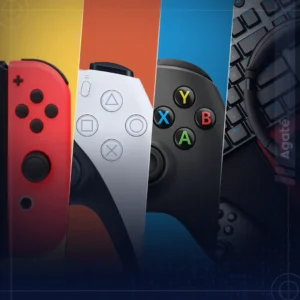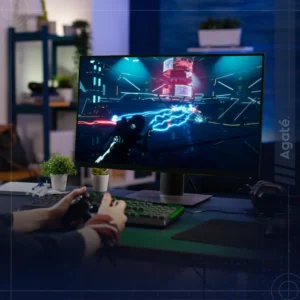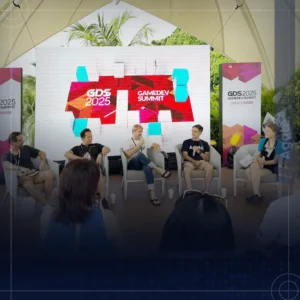Have you ever wondered how video games create stunning and realistic imagery? How do explosions, fire, smoke, water, magic, and other effects look so cool, lifelike, and immersive on your screen? The answer is VFX, or visual effects, which are the different ways of generating and/or manipulating images to give more emphasis, emotion, or dramatic or comic intensity to any scene in a video game.
Visual effects, or VFX in short, is created with the aim to give that “wow” factor to video games and, of course, to keep the player interested and engaged above anything else. If you’re wondering, you’re probably got mixed up with animation. And no, VFX is not the same as animation, which refers to the movement of 2D or 3D objects and characters. VFX are digital effects that are added to a game during post-production (before release) using software and hardware tools. With that said, let’s explore what VFX are and what kinds of VFX are used in games.
What is VFX Meaning in Games?
Visual effects, or VFX for short, play a crucial role in the development of video games. They help to create a polished and professional appearance for the games, as well as make them more appealing and fun to play. VFX also enhance the immersion of the players in the video game story by making them feel like they are part of the game world and its events. For example, VFX can create realistic or stylized effects, such as fire, smoke, water, magic, etc., that add to the atmosphere and mood of the game. VFX can also convey information and feedback to the players, such as health bars, damage indicators, quest markers, etc., that help them understand and interact with the game mechanics and systems.
What Kinds of VFX are used in Games?
Particle systems
A particle system is a technique in computer graphics, motion graphics, and game physics that uses small images or sprites to create special effects like fire, smoke, and sparks. These images move and behave based on pre-set rules, which makes them seem like fuzzy natural phenomena that are hard to replicate with traditional graphics techniques. Particle systems can be created and controlled using different software and hardware tools, such as Maya, Unreal Engine, or Photoshop. The settings of particle systems can be changed to adjust parameters like size, color, speed, and direction. Additionally, particle systems can interact with other game elements like wind, gravity, and collisions.
Meshes
Meshes are 3D models that can be used to produce different effects, like water waves or cloth simulations. They’re made up of sets of vertices that create the shape of the model and are arranged in a specific order or topology that allows the graphics card to render them properly. You can load meshes from files that contain vertex data or create them manually with software tools like Maya or Blender. To modify meshes, you can perform operations like scaling, rotating, and translating. You can also animate meshes by changing their vertices over time or using bones and weights for skeletal animation.
Shaders
Shaders are programs that run on the graphics card and control how the pixels on the screen are rendered. Shaders can be used to create effects such as lighting, shadows, color grading, reflections, refractions, etc.
Post-processing
Post-processing refers to the effects added to a scene after it’s rendered on the screen. These effects include blur, bloom, glow, lens flares, etc. In video games, post-processing is used to enhance visuals and add more effects to the images. This technique occurs after the game renders the images and before they are sent to the monitor. By changing color, detail, and smoothness of the images, post-processing can improve the mood and atmosphere of the game. This technique can also simulate camera effects such as depth of field, motion blur, and chromatic aberration.
How do VFX Artists Create VFX in Games?
VFX artists are responsible for creating VFX in games using various software and hardware tools. They need to have a solid knowledge base as well as lots of creativity and passion in the world of VFX and digital creation. Some of the skills and tasks that VFX artists need to have or perform are:
Concept art
Concept art is the initial stage of game development, where artists create sketches and drawings that show the game’s characters, environments, and objects. This artwork is vital in setting the game’s style, theme, and atmosphere, allowing developers to maintain a consistent look and feel throughout the game. This is the process of creating sketches or drawings that illustrate the idea or vision for a VFX effect.
Modeling
The process of creating 3D models or meshes that can be used for VFX effects. It requires an understanding of geometry, topology, and other technical aspects of 3D graphics, as well as creativity and artistic skills. Modeling can be done in different ways, such as sculpting, box modeling, and curve modeling, depending on the desired level of detail and style.
Texturing
This is the process of applying images or colors to 3D models or meshes to give them more detail and realism. Texturing can be done in different ways, such as painting directly on the model, projecting images from photos or scans, or generating procedural textures using algorithms.
Animation
Animation itself means creating movement or deformation for 3D models or meshes to give them more life and dynamism. Animation can be done by either keyframe animation, procedural animation, or motion capture.
Scripting
Scripting involves writing code or logic that controls how VFX effects behave or interact with other elements in the game. Essentially, scripting is the process of creating the rules that govern how the game functions. These rules dictate everything from how characters move and react to the environment, to the way the camera behaves and the sounds that are played
Compositing
The process of combining different layers or elements of VFX effects into a final image or video is called compositing. It can be done in real-time or in post-production using software tools such as Nuke, After Effects, or Unreal Engine. Compositing can be used to adjust the color, contrast, brightness, transparency, and blending modes of different VFX elements, as well as adding filters, masks, transitions, and other effects.







